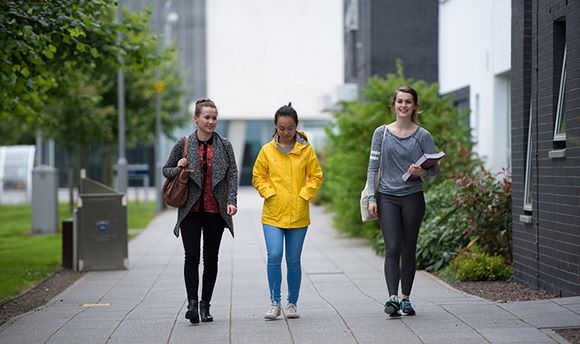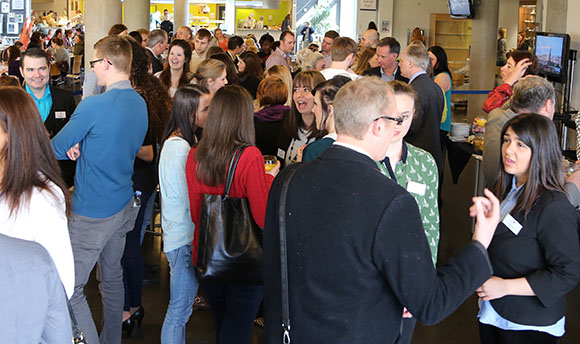Doctoral Bursaries - Centre for Health, Activity and Rehabilitation Research
Bursary topics in the Centre for Health, Activity and Rehabilitation Research as part the of the 2025 PhD Bursary at QMU, Edinburgh are as follows:
- Prehabilitation before Cardiac Surgery (BUR 25-01)
- Factors affecting the uptake and adherence to prehabilitation before surgery when delivered via a mobile health (mhealth) application. (BUR 25-02)
- Wearable sensors and AI based classification of activities of daily living for supporting elderly and frail individuals to live independently (BUR 25-03)
Interviews for all of these topics will take place on Wednesday 7th May 2025.
Prehabilitation is an intervention delivered to prevent or reduce subsequent injury or complications, and this concept has been adopted for individuals prior to surgery to improve and optimise their functional ability. Prehabilitation before surgery provides patients with a functional reserve to help them withstand the stresses of surgery resulting in improved outcomes including the reduction of post-operative complications, reduced hospital length of stay and a reduction in the associated hospital costs [1].
Within Cardiac Surgery there is an emerging body of evidence [2] to suggest that prehabilitation may be an effective intervention. However, caution is required when interpreting the results as many studies are small, interventions are poorly defined, and the mode and length of delivery varies making comparisons challenging. In addition, little is known about the facilitators and barriers affecting uptake and adherence to prehabilitation before Cardiac Surgery to ensure optimal implementation in clinical practice. Enhanced Recovery after Surgery (ERAS) guidelines [3] highlight the potential of prehabilitation before Cardiac Surgery but deems the current evidence of low quality and suggest further work is needed including identifying the optimal patient selection, testing effectiveness and exploring the most feasible and acceptable duration of the prehabilitation. TiteWith increasing waiting times for elective Cardiac Surgery [4], individuals are becoming more deconditioned while awaiting surgery. This increases the risk of post-operative complications and increased hospital length of stay thus further delaying the surgery for those on the waiting list. Prehabilitation offers a solution that has the potential to benefit both individuals and service delivery, but we need to understand the optimal approach to the implementation to gain the maximum benefits of this intervention. Therefore, this PhD bursary will explore the optimisation and implementation of prehabilitation before Cardiac Surgery.
Example research questions:
How is prehabilitation currently defined when delivered before Cardiac Surgery?
What are the barriers and facilitators that influence the implementation of prehabilitation before Cardiac Surgery?
What are the patient perceptions of undertaking prehabilitation before Cardiac Surgery?
What is the optimal timing and duration of prehabilitation before Cardiac Surgery?
The QMU Centre for Health, Activity and Rehabilitation Research (CHEARR) has a growing programme of research evaluating the implementation of prehabilitation and offers a strong background and environment for the evaluation of rehabilitation and health interventions using a range of different methodological approaches. This study will be facilitated through an existing collaboration between Queen Margaret University and NHS Lothian. We welcome applications from individuals from a healthcare background interested in the evaluation of prehabilitation in a Cardiac Surgery clinical setting.
References
1 Hughes MJ, Hackney RJ, Lamb PJ, Wigmore SJ, Deans DAC & Skipworth RJE. Prehabilitation before major abdominal surgery: A systematic review and meta-analysis. World J Surg 2019 43:1661-1668.
2 Steinmetz C, Bjarnason-Wehrens B, Walther T, Schaffland TF, Walther C. Efficacy of Prehabilitation Before Cardiac Surgery: A Systematic Review and Meta-analysis. Am J Phys Med Rehabil. 2023 Apr 1;102(4):323-330. doi: 10.1097/PHM.0000000000002097. Epub 2022 Sep 23. PMID: 36149383; PMCID: PMC10010695.
3 Michael C. et al. 2024 Perioperative Care in Cardiac Surgery: A Joint Consensus Statement by the Enhanced Recovery After Surgery (ERAS) Cardiac Society, ERAS International Society, and The Society of Thoracic Surgeons (STS) Grant, The Annals of Thoracic Surgery, Volume 117, Issue 4, 669 - 689
4 Blake, I. (2024) ’Heart care waiting list grows by nearly 100,000 in two years in England’ British Heart Foundation https://www.bhf.org.uk/what-we-do/news-from-the-bhf/news-archive/2024/june/heart-care-waiting-list-grows-again
Contact for enquiries: Dr Lisa Salisbury (LSalisbury@qmu.ac.uk)
Prehabilitation is a rehabilitation intervention delivered to prevent or reduce subsequent injury or complications, and this concept has been adopted for individuals prior to surgery to improve and optimise their functional ability (Barberan-Garcia et al 2018). Prehabilitation before surgery provides patients with a functional reserve to help them withstand the stresses of surgery resulting in improved outcomes including a reduction in the rate of post-operative complications, a reduced hospital length of stay and a reduction in the associated hospital costs (Hughes et al, 2019). Current prehabilitation programmes are predominantly hospital based, which is a major barrier to delivery because of the staff, space and cost implications. Hospital based delivery is also not suitable for patients who are immunosuppressed or with long commuting distances. These financial, geographical and health constraints exist in most regions within the UK and limit the availability of prehabilitation programmes. The adoption of digital methods to deliver rehabilitation, including prehabilitation, has been gaining attention and accelerated during the COVID-19 pandemic (Pedersen et al, 2023).
A scoping review undertaken by Ryan et al (2017) explored adherence with web-based interventions and concluded that an interdisciplinary approach, incorporating a range of technological, environmental, and individual factors, needed to be considered to comprehensively explain user adherence. Yang et al (2022) investigated the measurement of adherence to mHealth physical activity interventions including factors that could affect adherence, and the association between adherence and health outcomes. They found that there was little consensus around adherence to mhealth applications and yet this is critical to ensure effective, cost-effective delivery of health interventions delivered digitally. Furthermore, the biopsychosocial paradigm recognises the role psychological traits have in health behaviours and a recent systematic review found that traits such as the locus of control, predict the results of physiotherapy treatment outcomes (Álvarez-Rodríguez et al., 2022) and such psychological factors should be taken into account when designing mhealth applications. The Scottish Government (2023) has a strategy focusing on digital innovations in health and social care and it is important that implementation of mhealth innovations into practice is effective across the entire population and understanding the factors which unpin adherence is a critical component. Therefore, this work will explore uptake and adherence to digitally delivered mhealth specifically in prehabilitation before surgery.
Example research questions:
How can adherence to prehabilitation using an mhealth application be defined?
What factors affect the uptake of mhealth interventions?
What factors affect the adherence to mhealth interventions?
References
Álvarez-Rodríguez J, Leirós-Rodríguez R, Morera-Balaguer J, Marqués-Sánchez P, Rodríguez-Nogueira Ó. The Influence of the Locus of Control Construct on the Efficacy of Physiotherapy Treatments in Patients with Chronic Pain: A Systematic Review. J Pers Med. 2022 Feb 7;12(2):232. doi: 10.3390/jpm12020232. PMID: 35207720; PMCID: PMC8880621.
Barberan-Garcia A, Ubré M, Roca J, et al. Personalised prehabilitation in high-risk patients undergoing elective major abdominal surgery: a randomised blinded controlled trial. Ann Surg 2018, vol 267: Issue 1: 50-56.
Care in the Digital Age: Delivery Plan 2023-24 Scottish Government and COSLA 2023 ISBN 9781835211519
Hughes MJ, Hackney RJ, Lamb PJ, Wigmore SJ, Deans DAC & Skipworth RJE. Prehabilitation before major abdominal surgery: A systematic review and meta-analysis. World J Surg 2019 43:1661-1668.
Pedersen, MB., Saxton, J., S Birch, S., Rasmussen Villumsen, B., Jensen, JB. The use of digital technologies to support home-based prehabilitation prior to major surgery: A systematic review, The Surgeon, 2023, https://doi.org/10.1016/j.surge.2023.05.006.
Ryan, C., Bergin, M. & Wells, J.S. Theoretical Perspectives of Adherence to Web-Based Interventions: a Scoping Review. Int.J. Behav. Med. 25, 17–29 (2018). https://doi.org/10.1007/s12529-017-9678-8
Yang Y, Boulton E, Todd C. Measurement of Adherence to mHealth Physical Activity Interventions and Exploration of the Factors That Affect the Adherence: Scoping Review and Proposed Framework. J Med Internet Res. 2022 Jun 8;24(6):e30817. doi: 10.2196/30817. PMID: 35675111; PMCID: PMC9218881.
Contact for further information: Dr Lisa Salisbury (LSalisbury@qmu.ac.uk)
The global aging population poses significant challenges to healthcare systems, especially in promoting independent living and reducing caregiver burdens. The desire to live independently with advancing age, combined with multiple coexisting conditions and associated risks, may conflict with safety and ability to maintain other instrumental and leisure daily activities. There is an ever growing need for sustainable and cost effective solutions and systems to support the world’s aging population in maintaining independent living and prevent the occurrence of common injuries associated with disability and frailty such as falls, bone fractures and hospital admissions (2). Technology-enabled care (TEC), which leverages digital tools and artificial intelligence (AI), has emerged as a promising solution to support older adults. A crucial component within TEC is the automatic recognition of Activities of Daily Living (ADLs), essential for the early detection of health declines and personalised care. Traditional ADL recognition research, often conducted in controlled environments, does not adequately address real-world complexities.
This project aims to bridge the gap between laboratory prototypes and practical real-world applications by developing a user-friendly framework for ADL recognition in everyday settings using commercially available wearable sensors.
We will implement new methods to record and monitor quantity and quality of human movement, incorporating data analysis, with state-of-art wearable devices, to offer novel insights into ADLs of elderly and frail individuals and the relationship to health and wellbeing outcomes.
This project will be supported by a multidisciplinary team of clinicians, academics and researchers with access to state-of-the-art research facilities and expertise of all processes that need to be considered for the next phase of development, adoption and implementation of the AI based ADL classification tool.
Contact for enquiries: Dr Pelagia Koufaki (PKoufaki@qmu.ac.uk)



